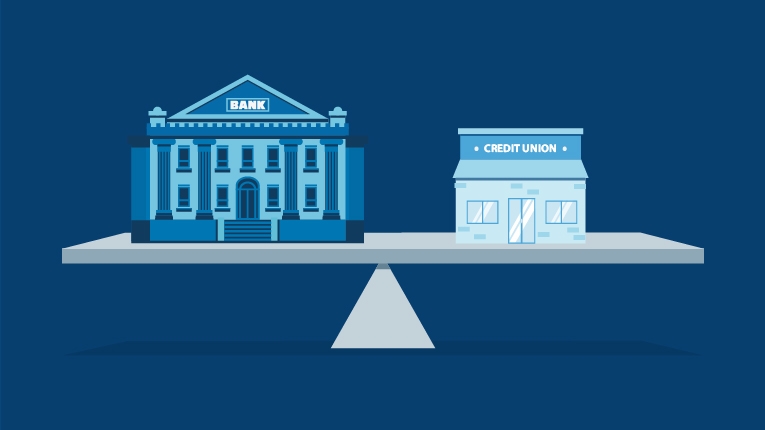5 Ideas to Build Passive Income

For most people, earning an income means a direct exchange of your time and talents for money from an employer. If you wanted to make some extra income, typically you might think about picking up a second job or a side gig. But what if you could increase your income without increasing your time spent working?
That’s the idea behind passive income—money earned by investing your assets, selling your ideas, renting out property you own, and more—without you having to always be actively involved.
But here’s the catch: most passive income ideas aren’t 100% passive. While passive income streams may require some time and effort to set up, manage, or maintain, your income is not directly tied to how much you work on an hour for hour basis. Instead, your money or assets work for you, generating regular (though sometimes variable) income, even while you sleep.
What Is Passive Income?
Passive income is money earned from a business venture or strategy that doesn’t require you (the owner) to be continuously, or actively, involved to keep the income stream flowing. Generally, developing a passive income stream means using an asset you have or create to generate revenue.
For example, let’s say you want to live out your lifelong dream of spending a year abroad. If you own your home, you can lease it out while you’re away and use the monthly profits (the rent you collect minus your mortgage, property tax, insurance, and maintenance expenses) as passive income to help fund your living expenses while you’re away. If you also have a bit of cash set aside, you might invest it to generate a monthly cash flow. Whether you create enough passive income to take a full sabbatical or use the money to pay rent and extra expenses while you continue your job remotely, passive income can provide you with the additional money you’ll need, potentially without requiring you to take on an additional job.
Passive income can supplement your regular income or provide an inflow of cash during retirement or family leave. You may want a passive income stream you can start tapping immediately, or you may prefer to build a series of income streams over time by diversifying your strategies and reinvesting some or all of your profits.
Passive Income Ideas Worth Exploring
Passive income can come from many sources. The right source for you depends on your assets, skills, and interests. If you’re new to the idea of passive income, knowing where to start can be a major hurdle. Following are five common passive income strategies to spark your thinking. While these ideas are by no means all-encompassing, they may help you uncover paths for further exploration.
1. Build your high-yield savings.
Pros: Low risk; no skill required.
Cons: Limited gains.
Putting your money into a high-yield savings account or certificate of deposit (CD) earns you interest without requiring much expertise or attention, and with very low risk. Be sure your financial institution is insured by FDIC or NCUA so your deposits are safe up the maximum allowable amounts.
The downside is slow and steady growth: You won’t get rich quickly. A $10,000 deposit at 4.50% earns you about $450 a year in interest. The tradeoff is stability. Keeping at least some of your money in savings can help provide some diversification.
2. Consider your investments.
Pros: Potential for higher returns than with regular savings.
Cons: High risk; steep learning curve; works best with a trusted advisor.
Consider developing a well-rounded, diversified investment strategy that meets your financial goals and risk tolerance, as risk is fundamental to almost any investment strategy. There are many types of investments, such as stocks, bonds, real estate investing, art investing and other types of alternative investments. Consult with financial advisors or other professionals to receive personalized investment advice and guidance.
3. Sell (or license) your ideas.
Pros: Puts your creativity to good use.
Cons: Requires specific skills, talents, or expertise.
Money isn’t the only asset that can generate passive income. If there’s a market for your invention, photos, music, or design work, you may be able to license your intellectual property and earn royalties. You can also write a book or e-book and sell it to a publisher or publish it yourself.
Two major caveats here: First, you need ingenuity to come up with a marketable product idea or creative asset. Then, bringing your ideas to life and marketing them can be resource intensive. If the creative process doesn’t appeal to you, this might not be your best opportunity. On the other hand, if you’re a natural musician, artist, writer, or idea generator, finding ways to turn your creativity into income could mean both fun and profit.
4. Rent out your property.
Pros: Your idle assets earn you money.
Cons: May require a large investment and significant oversight.
Renting out a home or a dedicated property is a familiar way to generate passive income. Now, online platforms make it possible to rent out a variety of assets, from spare bedrooms to garage space, storage, your spare car or bike, and even tools. Obviously, your profits will vary depending on what you’re renting out, but so will your investment costs and the time and effort required to maintain and manage your property.
Some rental property (read: real estate) also has the potential to appreciate. While you’re collecting rent month after month, your rental property may increase in value, though fluctuations in the real estate market mean there are no guarantees.
5. Invest in a commercial business.
Pros: A silent partnership could get you in on the ground floor of a profitable business.
Cons: About 45% of new businesses fail within the first five years, according to the Bureau of Labor Statistics.
Although starting a business is not passive, investing in one as a silent partner can be. In exchange for providing capital to launch or grow a successful company, you may agree to receive a percentage of the business’ profits as passive income.
Before you sign on, though, be sure to vet any business opportunity carefully, even if the business owner is a friend or family member. Review business plans, consult with an accountant or business advisor, and think carefully about the potential downside. Beware of multi-level marketing programs and other schemes that promise big returns on minimal effort but may require you to purchase extensive inventory or recruit other sellers. They may be more work than you bargained for.
How to Find a Passive Income Idea That Works for You
How do you find an idea that works for you? Use the strategies above as a launching point or consider ideas you come across in your everyday life. Here are a few things to think about as you size up your options.
Start with what you have.
Do you have money set aside to invest? Did you recently inherit a family home? Do you have a trove of nature photographs you can license or publish? Take stock of what you have and see whether there’s an opportunity there.
Know it’s okay to start small.
If you don’t have a home to rent out, consider renting out your garage. You might not get rich licensing one piece of music, but doing it once paves the way for doing it again. Small investments and small gains get you started. If you can, use at least some of your profits to reinvest and grow.
Understand your risks.
Sometimes, you’re comfortable rolling the dice and seeing where a business investment lands. Other times, losing even a portion of your investment would be a big blow. Ask yourself how likely it is that a given investment might lose money, then ask what a loss would mean to you and your finances. Depleting your retirement fund, raiding your emergency cash, or taking on debt in exchange for near-term income might be poor choices in the long term, especially if you don’t see the returns you expect. Consider choosing a safer investment if you’re risk averse, even if it means accepting a smaller return. You may also want to limit risky investments to money you can afford to lose, so you don’t put your long-term financial health at risk.
Pay attention to profits.
Not every investment is profitable. That’s true whether you’re buying real estate or taking a stake in your friend’s gourmet food truck. So, don’t just focus on sales. Profitability includes calculating the cost of goods and other resources, such as your time. Be prepared with an exit strategy if the venture doesn’t live up to your expectations.
Diversify, if possible.
You don’t have to choose a single strategy. In fact, having multiple streams of income going at a time can help you hedge your bets and improve your odds of success. When one income stream lags, others may make up for it.
Plan for taxes.
Passive income is most likely going to be taxable income. Before you spend the income you’ve earned, be sure to factor in federal and state income taxes that may apply. If you expect to make $1,000 or more for the year, consider making quarterly estimated tax payments to the IRS to avoid penalties at tax time. Consult with a tax advisor to see if your business or investment expenses are deductible, and what you’ll need to do to report income and expenses on your tax return.
Be prepared to change course.
Some opportunities run their course. Sometimes your interests or priorities change. You can change up your income streams periodically or branch out into additional streams to optimize your income and keep things fresh.
The Bottom Line
Depending on what you have to start with, you may be able to add a few dollars to your regular income or improve your lifestyle with passive income. Despite its leisurely-sounding name, passive income isn’t entirely effortless. You may need to invest some time (probably, a lot of time) to gain skills or create assets. Doing it right matters: A high-interest savings account may earn many times more interest than a regular savings account, for example, which can make a difference in how much income you receive.
By keeping your eyes open for opportunities, you may also develop a mindset that looks beyond your current salary and traditional work for sources of income. Even if passive income never replaces your need to work a regular job, cultivating additional means of support can help you see a wider range of options for yourself. That alone is enriching.




